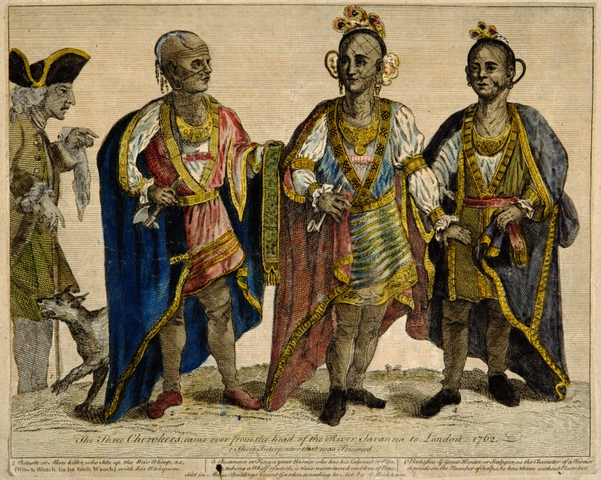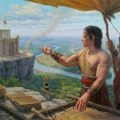Question
Gramps,
When Cherokee Indians were first contacted by journalist Timberlake in the early 1700’s, he was very surprised that they had a complete knowledge of all of the information in the first five books in the old testament. Does that prove they were part of the 4,500 Nephites that went north in 55 BC?
Larry
Answer
Larry,
Timberlake’s memoirs provide a detailed account of his experiences with the Cherokee. In 1762, he accompanied three Cherokee leaders to London, intending to establish peace between their people and the British settlers. Timberlake noted the cultural differences and misunderstandings during these interactions, illustrating the complexities of cross-cultural communication. He described an incident where a Cherokee leader attempted to offer a traditional sign of friendship by smoking with the king, unaware that such an act would be seen as inappropriate (Timberlake, 1765). His observations highlight the deep cultural nuances that characterized the interactions between the Cherokee and the European settlers.
Timberlake’s accounts suggest that the Cherokee had an understanding of moral and ethical principles found in the first five books of the Old Testament. Reports from missionary efforts in the early 19th century revealed that some Cherokee individuals were familiar with biblical texts. A report from the Brainard mission among the Cherokees concluded in 1821 that the Cherokee people had progressed significantly in their understanding and acceptance of Christianity, indicating a level of biblical knowledge that might support claims of ancient connections to biblical traditions (Book of Mormon Evidence, 2020). This observation raises questions about the historical transmission of these ideas among indigenous peoples prior to European contact.
Scholarly discourse has explored the possibility that the Cherokee may be descendants of the Nephites, a group described in the Book of Mormon. The Book of Mormon recounts the history of two primary groups—Nephites and Lamanites—who were believed to have ancient ties to Israel. Some scholars argue that the cultural and linguistic similarities between the Cherokee and the Nephites warrant further investigation. For instance, the Cherokee’s oral traditions often speak of ancestral connections and sacred texts, reminiscent of the Nephite writings. (Lamanite Identity).
The historical context surrounding migrations of peoples in ancient America has fueled theories regarding the Cherokee’s origins. Ethan Smith’s “View of the Hebrews” proposed that Native Americans might be descendants of the lost tribes of Israel, a theory that influenced early Latter-day Saint understanding of Native identities. (Book of Mormon Evidence) This perspective aligns with Timberlake’s observations and the biblical knowledge reported among the Cherokee, suggesting a deeper historical connection than previously acknowledged.
Timberlake’s interactions revealed that the Cherokee possessed cultural practices and ethical teachings that parallel those found in Judeo-Christian traditions. Their understanding of concepts such as community responsibility, moral integrity, and respect for nature resonates with teachings in the Old Testament. This similarity invites further exploration into how such principles may have been transmitted across cultures over centuries. The traditions of mound-building and certain ceremonial practices among tribes like the Cherokee may reflect ancient cultural continuities, potentially linking back to the Nephite civilization.
Timberlake’s interactions with the Cherokee Indians highlight a complex tapestry of cultural exchange and understanding. The documented biblical knowledge among the Cherokee, combined with scholarly perspectives linking them to the Nephites of the Book of Mormon, invites further exploration into the ancient histories of Native American tribes. While definitive evidence linking the Cherokee directly to the Nephites remains elusive, the alignment of cultural practices and ethical teachings suggests a complex historical narrative worth further exploration. As we continue to uncover the narratives of these interactions, we can foster a deeper appreciation for the rich tapestry of American history that includes both indigenous and European perspectives.
Gramps







